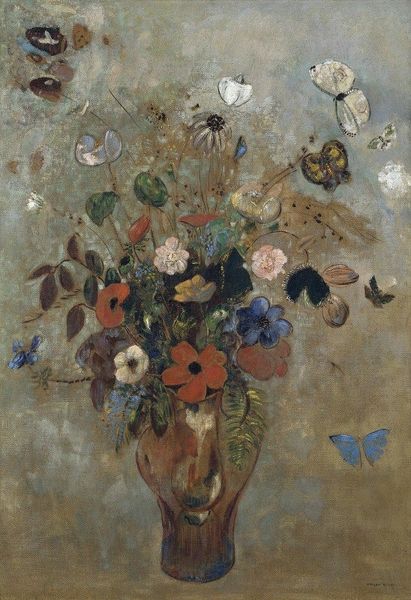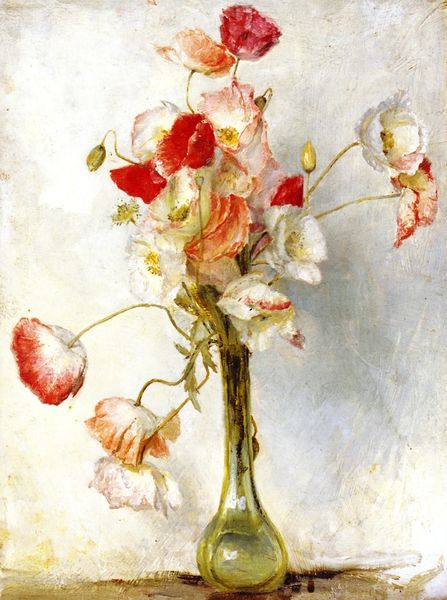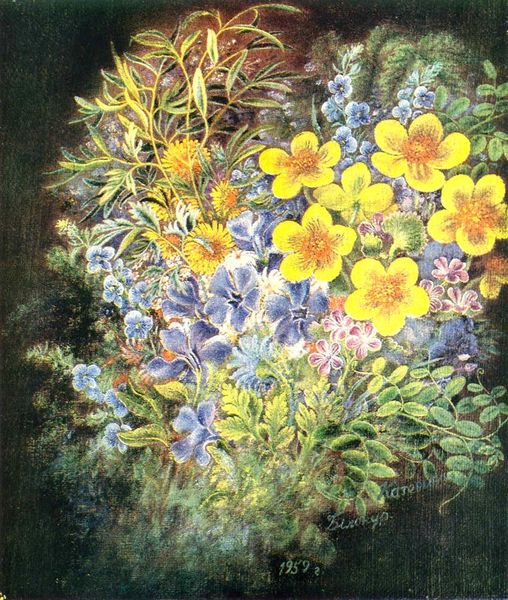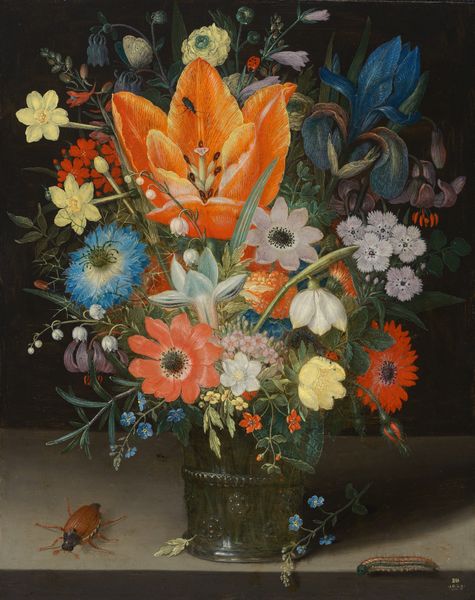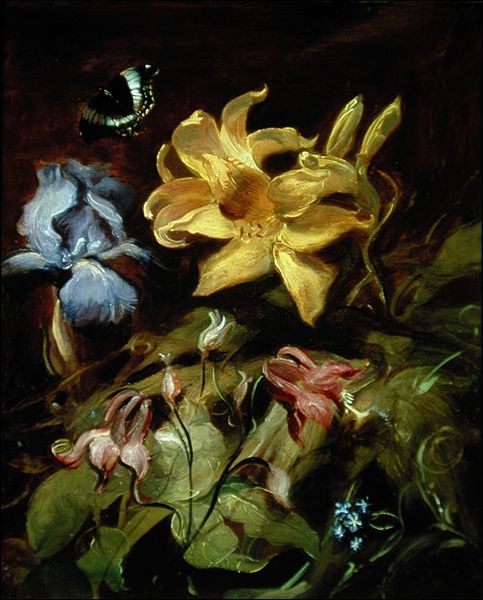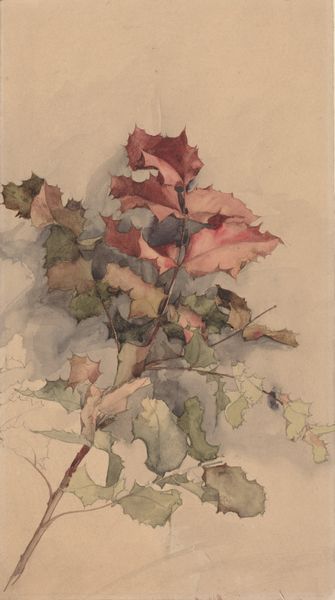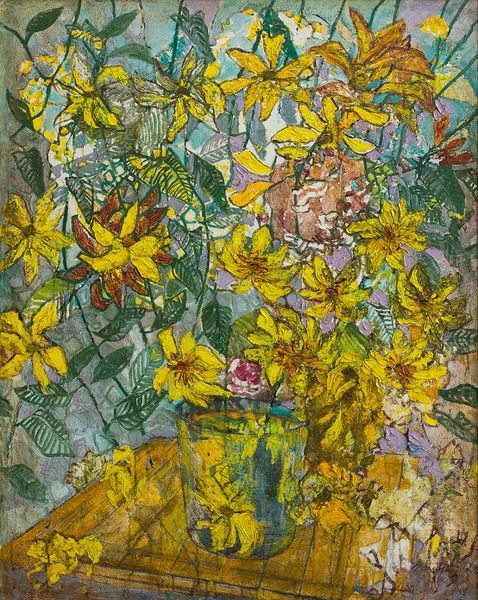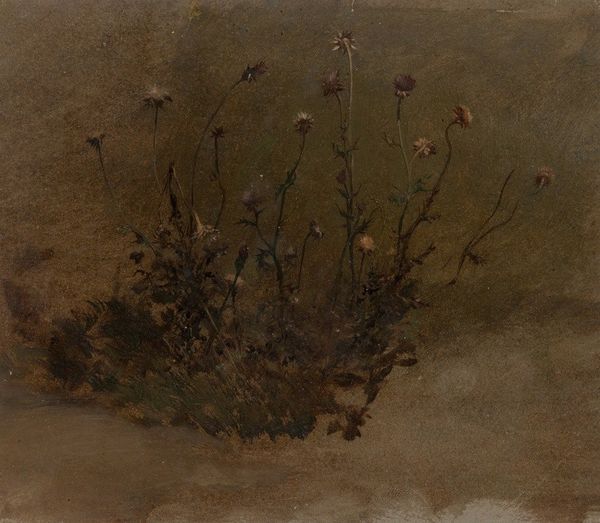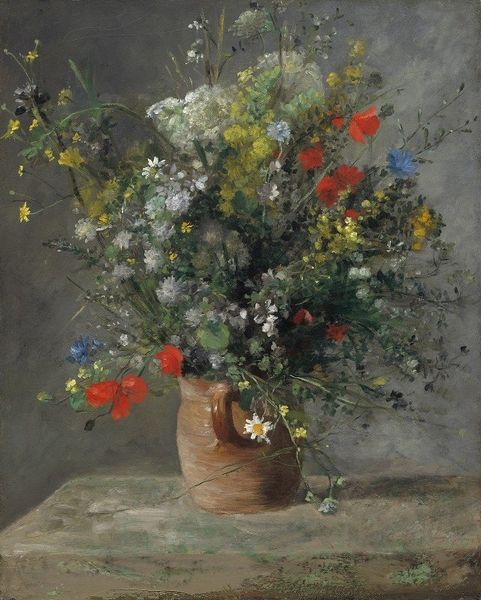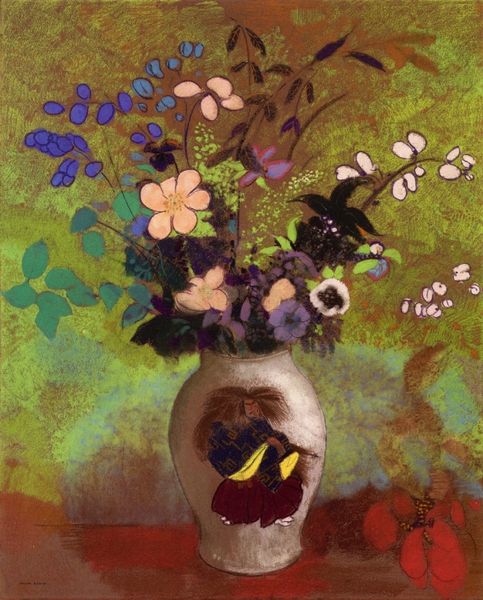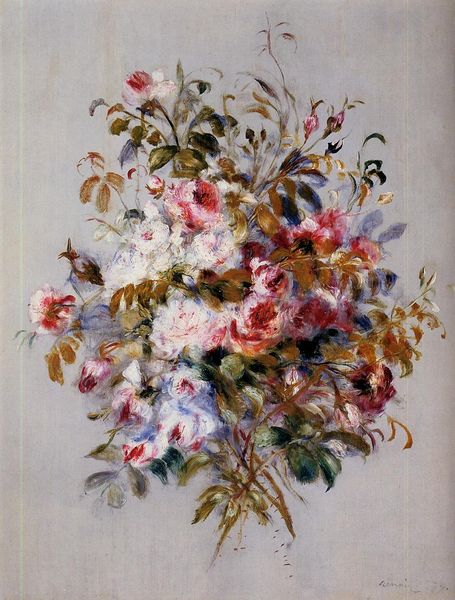
painting, oil-paint
#
still-life
#
painting
#
oil-paint
#
oil painting
#
romanticism
Dimensions: 50.3 x 33 cm
Copyright: Public domain
Editor: We're looking at "Flowers in a glass vase," an oil painting by John Constable from 1814. I'm struck by how it feels both carefully composed and utterly spontaneous. The colors are vibrant, but there's a sense of decay hinted at as well. What do you see in this piece? Curator: Beyond its surface appeal as a beautiful still life, this painting invites us to consider the language of flowers prevalent during the Romantic era. Each bloom carried a symbolic weight. Given Constable's radical approach to landscape, might this intimate arrangement offer a subtly subversive commentary on idealized beauty and the societal expectations imposed on women of his time? Notice how the flowers seem almost bursting out of the vase. Does that strike you as unusual for a still life? Editor: I hadn't thought about it that way. It does seem like they're resisting the container, almost trying to escape! The Romantic era was all about pushing boundaries, right? Curator: Precisely! Could this overflowing arrangement reflect a larger societal tension—a burgeoning desire for freedom against the constraints of early 19th-century England? Think about how women were often seen as decorative objects during that period, much like flowers. Editor: So, Constable might be using the traditional genre of still life to comment on the limited roles available to women and the desire to break free from those constraints? It's like he's giving these 'decorative objects' a voice. Curator: It's a compelling possibility. Looking closer, the decaying petals also point toward the transient nature of beauty and the passage of time – a theme often associated with Vanitas painting, but given new emotional resonance here, no? Perhaps, challenging societal notions of youthful beauty as the only valuable form of female identity. Editor: I see it now. That shifts the painting’s meaning so much! I came in thinking it was just a pretty picture, but it's actually layered with social commentary. Curator: Absolutely. By understanding the historical context and applying contemporary feminist theory, we can reveal deeper, often overlooked, narratives within these seemingly simple artworks.
Comments
No comments
Be the first to comment and join the conversation on the ultimate creative platform.
